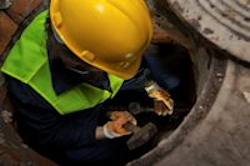Don't Assume Confined Spaces are Safe
Confined spaces are deceiving. A confined space often appears to be harmless; no danger signs are apparent and the space may have been entered on prior occasions without incident. However, a worker cannot assume conditions have not changed, and the area is safe for entry each time.

Some materials may pose an immediate threat to the life and health of the worker entering the space. However, dangerous materials, such as hydrogen fluoride gas, may cause a sudden or fatal collapse 12-72 hours after exposure. The victim "feels normal" after recovery from transient effects until collapse. Such materials in hazardous quantities are considered to be "immediately" dangerous to life or health.
Below is a list of other hazards workers may encounter while working in a confined space:
- Space configurations such as small openings and inwardly converging walls, which can trap an entrant, restrict easy entry and exit, or impede rescue.
- Atmospheric hazards such as gasoline tank vapors, combined with limited ventilation are the most common type of hazards in confined spaces. Oxygen levels may be hazardous and cause asphyxiation (less than 19.5%) or fire (over 23.5%).
- Physical hazards, such as unstable grain contained in silos, which can engulf a worker.
- Other hazards associated with general industry, such as electrical equipment, moving machinery, falling objects, and wet or slippery surfaces.
Below is a list of potential hazards to be aware of when working in a confined space:
- No ventilation (pits and vaults seldom opened).
- Leaking chlorine gas (which is heavier than air) can accumulate in low-lying areas.
- Oxygen depletion; which can be caused by:
- Rotting vegetation and decaying dead animals.
- Corroding or rusting machinery.
Knowledge Check Choose the best answer for the question.
1-3. Which of the following is the most common type of hazard in a confined space?
You forgot to answer the question!
